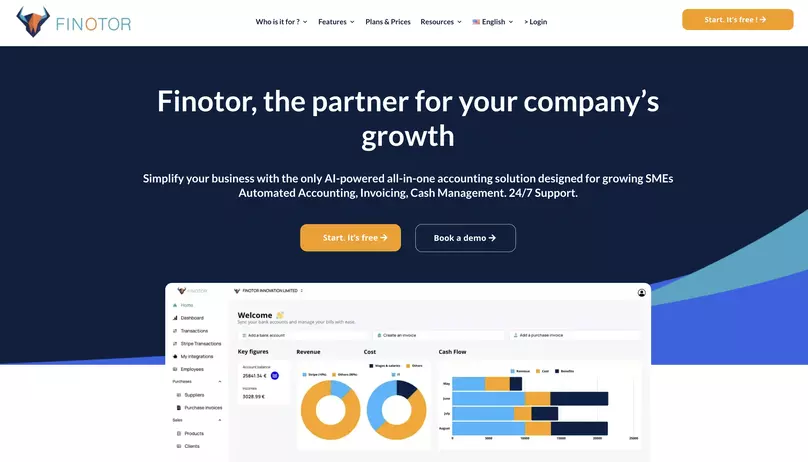Cost accounting is a method of accounting that is used to track, analyze, and report on the costs associated with running a business. It is an important aspect of financial management that is used to make informed decisions about how to allocate resources, set prices, and manage expenses. The purpose of cost accounting is to provide managers with detailed information about the costs of products, services, and projects, so that they can make informed decisions about how to operate the business in the most efficient and profitable way.
This article will provide an overview of the key concepts and methodologies of cost accounting, including the different types of costs, cost-volume-profit analysis, job order costing, process costing, and activity-based costing. It will also explore the importance and future of cost accounting, and provide recommendations for effectively utilizing cost accounting in business operations.
1. Concepts of Cost Accounting
A. What are the different types of costs
- Direct costs are costs that can be directly traced to a specific product, service, or project. Examples include raw materials, labor, and direct overhead. These costs are essential for determining the cost of goods sold and are used in pricing decisions.
- Indirect costs, also known as overhead costs, are costs that cannot be directly traced to a specific product, service, or project. Examples include rent, utilities, and administrative expenses. These costs are necessary for running the business, but they are not directly related to the production of a specific product or service.
- Fixed costs are costs that do not change with the level of production or sales. Examples include rent, salaries, and insurance. These costs must be covered regardless of the level of production or sales.
- Variable costs are costs that change with the level of production or sales. Examples include raw materials, direct labor, and commission. These costs fluctuate with the level of production or sales.
- Sunk costs are costs that have already been incurred and cannot be recovered. Examples include the cost of equipment that is no longer in use or the cost of a failed product development project. These costs should not be considered when making future business decisions.
- Opportunity costs are the benefits that are given up by not pursuing a certain course of action. These costs represent the potential benefits that could have been gained if a different decision had been made.
B. Cost-Volume-Profit Analysis for cost accounting
- Breakeven point is the point at which a company’s revenues equal its costs. At this point, the company is not making a profit, but it is also not incurring a loss.
- Margin of Safety is the difference between the breakeven point and the expected level of sales or production. It represents the buffer that a company has before it starts incurring a loss.
- Contribution Margin is the amount of revenue that is left over after all variable costs have been subtracted. This amount is used to cover fixed costs and provide a profit. By understanding the contribution margin, a company can make informed decisions about pricing and production levels.
In summary, cost accounting is a process to track, analyze, and report on the costs associated with running a business. There are different types of costs that are used to make informed decisions about how to allocate resources, set prices, and manage expenses. Knowing the different types of costs and the concept of cost-volume-profit analysis, like breakeven point, margin of safety and contribution margin, can help managers make better decisions for their business operations.
If you want to know more about our different accompaniments: > Click here
2- Methodologies of Cost Accounting
A. Job Order Costing
Definition: Job order costing is a method of cost accounting that is used to track the costs of producing specific products or services. It is used in businesses that produce unique products or services, such as custom furniture or specialized engineering projects.
Steps in Job Order Costing :
- Identify the specific product or service that is being produced.
- Determine the direct materials, direct labor, and overhead costs associated with producing the product or service.
- Assign these costs to the specific product or service using a job cost sheet.
- Use the information on the job cost sheet to determine the cost of the product or service and to make pricing decisions.
Advantages : Job order costing provides detailed information about the cost of specific products or services, which can be used to make informed pricing decisions. It also helps identify areas where costs can be reduced.
Disadvantages : Job order costing can be time-consuming and may not be suitable for businesses that produce a large number of identical products or services. It also does not provide information about the overall efficiency of production operations.
B. Process Costing
- Definition: Process costing is a method of cost accounting that is used to track the costs of producing identical products or services in large quantities. It is used in businesses that produce large quantities of similar products, such as mass-produced goods or services.
- Steps in Process Costing:
- Determine the costs associated with each production process, such as direct materials, direct labor, and overhead costs.
- Assign these costs to the units of production using a process cost sheet.
- Use the information on the process cost sheet to determine the cost per unit of production and to make pricing decisions.
- Advantages: Process costing provides information about the efficiency of production operations, which can be used to identify areas where costs can be reduced. It is also suitable for businesses that produce large quantities of identical products or services.
- Disadvantages: Process costing does not provide detailed information about the cost of specific products or services, which can make pricing decisions more difficult. It also does not provide information about the efficiency of specific production processes.
C. Activity-Based Costing
- Definition:
Activity-based costing is a method of cost accounting that assigns costs to products, services, or projects based on the activities that are required to produce them. It is used to identify the costs associated with different activities, such as design, production, and marketing, and to make informed decisions about how to allocate resources. - Steps in Activity-Based Costing:
- Identify the activities that are required to produce a product or service.
- Determine the costs associated with each activity, such as direct materials, direct labor, and overhead costs.
- Assign these costs to the activities using an activity-based cost sheet.
- Use the information on the activity-based cost sheet to determine the cost of the product or service and to make pricing decisions.
- Advantages:
Activity-based costing provides detailed information about the costs associated with different activities, which can be used to identify areas where costs can be reduced. It also helps identify the true costs of products or services, which can make pricing decisions more accurate. - Disadvantages:
Activity-based costing can be time-consuming and may not be suitable for businesses that produce a small number of products or services. It also does not provide information about the overall efficiency of production operations.
Conclusion
In conclusion, cost accounting is an important aspect of financial management that is used to make informed decisions about how to allocate resources, set prices, and manage expenses. The key concepts of cost accounting include the different types of costs, such as direct, indirect, fixed, variable, sunk, and opportunity costs and cost-volume-profit analysis such as breakeven point, margin of safety, and contribution margin. The methodologies of cost accounting include job order costing, process costing, and activity-based costing, each with their own advantages and disadvantages.
Job order costing is suitable for businesses that produce unique products or services and provides detailed information about the cost of specific products or services. Process costing is suitable for businesses that produce large quantities of identical products or services and provides information about the efficiency of production operations. Activity-based costing is useful for identifying the costs associated with different activities and making informed decisions about how to allocate resources.
In the future, cost accounting will continue to be an important tool for businesses as they strive to improve their operations and increase their profits. Companies that effectively use cost accounting will be better equipped to make informed decisions and stay competitive in the marketplace. It is important for businesses to use cost accounting in a way that is tailored to their specific needs and to evaluate the advantages and disadvantages of each method to choose the right one for their operations.









